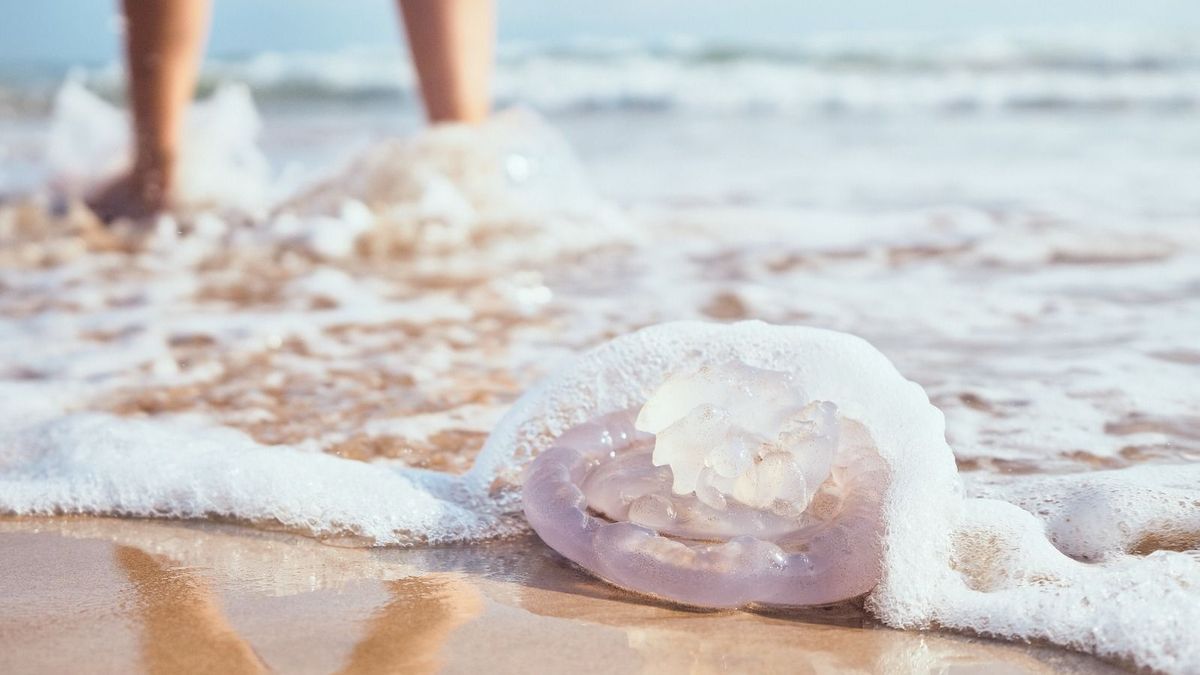
With global warming, jellyfish are proliferating more and more on many Mediterranean beaches. To relieve the pain, do you have to pee on the bite or is it an urban legend? But is it really a good idea? We take stock with Dr Gérald Kierzek, medical director of TipsForWomens.
While swimming in the sea, you feel a burning and itching sensation. A jellyfish has probably just stung you. Non-lethal, the bites of these marine animals are very painful to say the least. Should we urinate on it to relieve the pain? Is it really effective? What are the right reflexes to adopt? All the answers from Dr Gérald Kierzek, emergency doctor.
How to recognize a jellyfish sting?
The jellyfish has stinging cells on these tentacles, which in case of contact with the skin causes a stinging sensation. We talk about “jellyfish sting” but in reality, this animal does not sting like a mosquito or a wasp. When a jellyfish stings, the inflammatory reaction is often immediate and symptoms occur:
- Tingling;
- Itching;
- pain;
- Significant burn.
A red mark of several centimeters on the area of the sting, as well as vesicles similar to nettle stings also appear. “The lesion is red and quite extensive, measuring 3 to 4 cm. In general, we manage to clearly distinguish the trace of the tentacle of the jellyfish on the epidermis. All around, there are vesicles filled with venom, similar to nettle stings.had explained Valentine Cabanel, doctor of pharmacy for TipsForWomens in 2020.
How to react in the event of a jellyfish sting?
Should you urinate on a jellyfish sting? Well no ! Peeing on a jellyfish sting is a received idea, as Dr Gérald Kierzek points out, “It does not in any way relieve the pain associated with the venom of the jellyfish. The idea behind this “bathing legend” was not so much to pee on it but rather to relieve the pain thanks to the temperature of the urine. It was a question of approaching a source of heat on the sting. But that does not work. The toxin of the venom is not thermolabile. It is not necessarily destroyed by the heat of the urine “. This misconception can even be counterproductive, as it can cause the remaining cells of the tentacles to burst, releasing the venom and therefore increasing the pain.
On the other hand, “you should rinse the area with salt water (sea water) and not fresh water. You can also apply sand to the sting and scrape with a blue card or a postcard to remove the rest of the tentacle still present. Above all, do not remove them with your fingers.adds the expert.
If the pain persists after 48 hours, contact your doctor.
